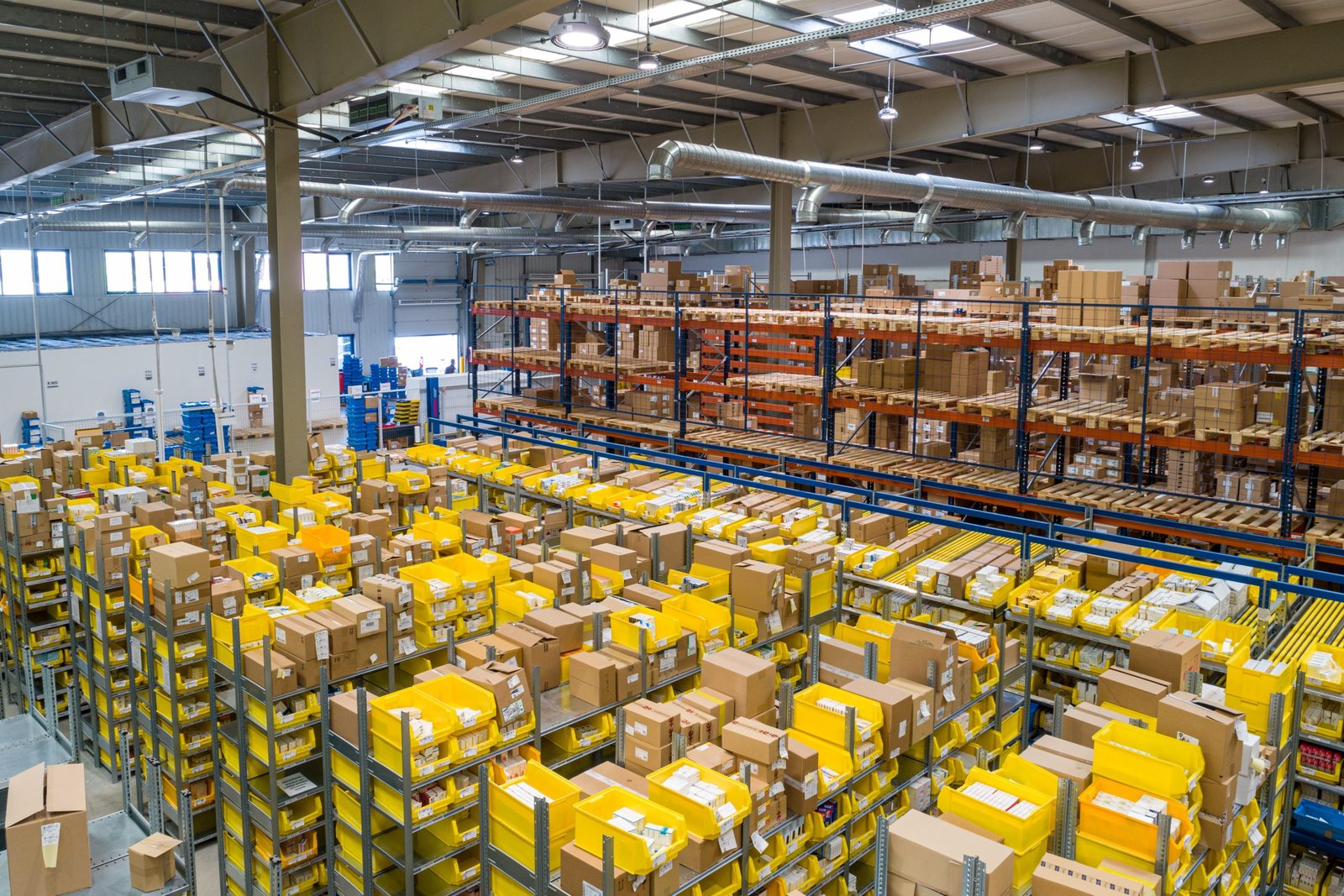
Key takeaways for The Ultimate Guide to Reverse Logistics Network Design
- The architecture of the reverse logistics network is essential for streamlining operations and cutting expenses.
- Profitability can rise and customer happiness can be enhanced with an effective network architecture.
- Technology implementation and sustainability optimization are critical factors in the construction of a successful reverse logistics network.
- For reverse logistics to continuously develop, success must be measured using metrics and KPIs.
Understanding Reverse Logistics Network Design
In order to maximize operations, businesses must comprehend reverse logistics network design.
It entails organizing and strategically arranging the material and product flow throughout the reverse supply chain.
Through the analysis of variables like product returns, repairs, and recycling, companies may create an effective network that reduces expenses and optimizes the use of resources.
Ensuring the efficient and timely movement of goods back to the right location while lowering transportation costs and lessening environmental effect is the main objective of reverse logistics network architecture.
Key Considerations for Efficient Network Design
A number of things must be carefully taken into account for network design to be efficient.
First, companies should assess their clientele to ascertain the ideal quantity and placement of return centers or facilities.
They should also take into account the best possible balance between cost and environmental impact when choosing the means and routes for product returns.
To guarantee effective handling and processing, organizations should also assess the packaging and labeling specifications for returned goods.
Finally, it’s critical to collaborate and have clear channels of communication with all parties participating in the reverse logistics process.
Implementing Technology for Streamlined Operations
Reverse logistics activities must be streamlined, which requires the use of technology.
Companies may improve visibility and control over the complete reverse supply chain by using software solutions to track and trace returned goods.
Returned item handling can be accelerated by automated sorting and processing systems, which can save manual work and increase efficiency.
Businesses can foresee demand for returned products and optimize inventory management by utilizing data analytics and predictive modeling.
Technology can also improve overall operational efficiency by facilitating smooth communication and collaboration among diverse stakeholders.

Maximizing Sustainability in Reverse Logistics
One of the most important factors in designing a reverse logistics network is maximizing sustainability.
Companies can support ecologically friendly practices by encouraging the repair and refurbishment of products rather than their disposal.
Additionally, they can put recycling procedures into place to reduce waste and guarantee that materials are handled responsibly.
Reducing carbon emissions can be further achieved by optimizing routes and using renewable energy sources for transportation.
Businesses can cut expenses while also making a positive impact on a more sustainable and environmentally friendly future by integrating sustainability into their network design.
Measuring Success: Metrics and KPIs
Key performance indicators (KPIs) and metrics must be used to measure reverse logistics success.
Customer satisfaction, processing time, return rates, and transportation expenses are a few crucial factors to take into account.
KPIs like inventory turnover, on-time delivery, and sustainability goals can give important information about how well the network architecture is working.
Businesses may enhance their reverse logistics operations by identifying areas for improvement and making data-driven decisions through regular monitoring and analysis of key indicators and KPIs.
Conclusion
To sum up, the design of the network for reverse logistics is essential to optimizing efficiency and cutting expenses.
Businesses can achieve efficiency and sustainability in their reverse logistics processes by comprehending the important factors and putting technology into practice.
Network architecture can be optimized and improved continuously by routinely monitoring results using metrics and KPIs.
Unlock the potential of your network design for reverse logistics and reap the rewards of lower expenses and more customer satisfaction.

FAQ
What are the 7 R’s of reverse logistics?
products through resale, parts harvesting, or other means.In order to handle their reverse supply chain efficiently, organizations need to abide by the 7 R’s of reverse logistics. Among these guidelines are:
1. Returns: Handling returns effectively to guarantee that merchandise is received and processed on schedule.
2. Remanufacturing: Increasing the lifespan and minimizing waste of returned goods by refurbishing and reusing them.
3. Repair: Making any flaws or problems with returned goods right so they can be sold again.
4. Refurbishment: Improving returned goods’ functioning and quality to satisfy customers.
5. Recycling: Reusing resources to dispose of returned goods in an ecologically responsible manner.
6. Reuse: To maximize the value of returned goods, find new uses or markets for them.
7. Recovery: Drawing out what’s left of the returned
By following these principles, businesses can optimize their reverse logistics processes, reduce costs, and improve sustainability in their operations.
How reverse logistics reduce costs?
There are various ways in which reverse logistics can drastically cut expenses. Businesses can reduce needless costs related to handling and discarding of returned goods by effectively handling product returns, repairs, and recycling. Reverse logistics networks that are carefully planned and implemented can optimize transportation routes and modes, which will ultimately lower transportation costs. Additionally, companies can reduce costs associated with producing new goods by optimizing resource usage through the refurbishing and reuse of returned goods. All things considered, a more efficient reverse logistics procedure can result in financial savings that boost sustainability and profitability.
What are the 5 R’s of reverse logistics?
Businesses must adhere to the 5 R’s of reverse logistics in order to operate their reverse supply chain efficiently. Among these guidelines are:
1. Returns: Handling returns effectively to guarantee that merchandise is received and processed on schedule.
2. Remanufacturing: Increasing the lifespan and minimizing waste of returned goods by refurbishing and reusing them.
3. Repair: Making any flaws or problems with returned goods right so they can be sold again.
4. Refurbishment: Improving returned goods’ functioning and quality to satisfy customers.
5. Recycling: Reusing resources to dispose of returned goods in an ecologically responsible manner.
Businesses can increase supply chain sustainability, cut expenses, and optimize operations by implementing these five Rs into their reverse logistics procedures.
What are the factors affecting the efficiency and effectiveness of reverse logistics process?
Numerous factors impacting the efficacy and efficiency of the reverse logistics process are important for firms to take into account.
Technology integration is a crucial component of the process because it may improve visibility and control over the entire reverse supply chain, automate repetitive tasks, and streamline operations. Working together with manufacturers, suppliers, and customers to guarantee effective coordination and transparent communication when managing returned goods is another crucial component.
In addition, the optimization of transportation routes and modes, together with the design and layout of return centers or facilities, are important factors in cutting expenses and raising the overall effectiveness of the reverse logistics network. The process is made more effective by including sustainability measures, such as encouraging the repair and refurbishment of returned goods and putting recycling initiatives in place.
The efficiency and efficacy of the reverse logistics process are largely determined by a confluence of factors including transportation optimization, strategic facility design, stakeholder collaboration, technology improvements, and sustainability initiatives. Businesses can attain cost savings and operational excellence in their reverse supply chain management by taking these variables into consideration.
I hope this article was helpful for more check out our previous blogpost by clinking here

